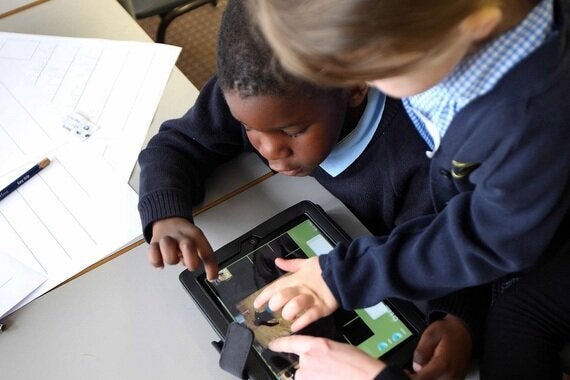New technologies can inspire and facilitate teaching, working arrangements and communication, but they can also introduce new kinds of crime, disorders and anti-social behaviour. We all have different capability to harness these benefits and display various degrees of resilience when confronting these risks. Increasingly, however, there is a noticeable divide in the society, most acutely experienced by young children.

Picture copyright: The Open University
Deep clefts
Digital divides are not a new phenomenon- researchers noted inequalities between lower and higher-income families in relation to Internet access in the 1990s. We also know that digital divides have persisted under different disguises, for instance in 2011, Common Sense Media reported an "app gap " between children from wealthier families who spend more time with interactive apps and lower-income children whose parents do not provide them with quality software.
While the access gap has started to be addressed by several initiatives providing affordable hardware to low-income families or free hardware to developing countries (for example, One Laptop per Child), the usage gap is much harder to bridge.
The usage gap relates to children's engagement with digital media, reported most recently by The Joan Ganz Cooney Centre: "Compared with their middle-income peers, low-income children are less likely to use digital media to build the type of knowledge and skills they will need to compete and cooperate in the global economy."
The differences in the usage of technologies are much more difficult to address because of a web of complex, inter-related factors: individual characteristics and socio-cultural variability influence how children respond to new resources and new learning situations. It is not just about low- versus high-income families -even if children are from the same family or community, their digital literacy skills vary.
Some children may be very skilled at playing Minecraft but completely lost with Excel charts, some may know how to use technologies meaningfully and purposefully, others are drawn under a range of inappropriate content (including cyberbullying, porn or extreme violence). The learning processes enabled by the technology (for example collective feedback enabled by MOOCs) as well as the affordances of the new hardware (the light-weight portable nature of iPads) impact children's learning in different ways.
How to address this complexity and variability in media usage? An effective way to consolidate the differences is to harness the power of collective in community-based projects.
Technology narrowing gaps
Community projects that bring together generations , are a great way to decrease isolation, mobilise talent among community members and reduce gaps in digital literacy skills. Indeed, projects that combine teaching digital literacy and traditional subjects (in this case local history) can enjoy great popularity among children, the elderly, teachers, parents as well as tech companies.
Moreover, community projects that bring together online and offline learning are an effective way to integrate learning spaces. The iSpot free community which helps to identify wildlife and share the discoveries online, is a great example of how to do such blending effectively.
Community-based, technology-enhanced projects teach children about 5Cs: collaboration, community and complexity, conversation and cohesion- things which help children build resilience and resourcefulness. They go against the popular discourse that seems to suggest that the role of technology is to merely disrupt traditional structures and enhance personalisation. Instead, they highlight the socialisation and networking opportunities of new technologies, which can reduce patterns of inequality.